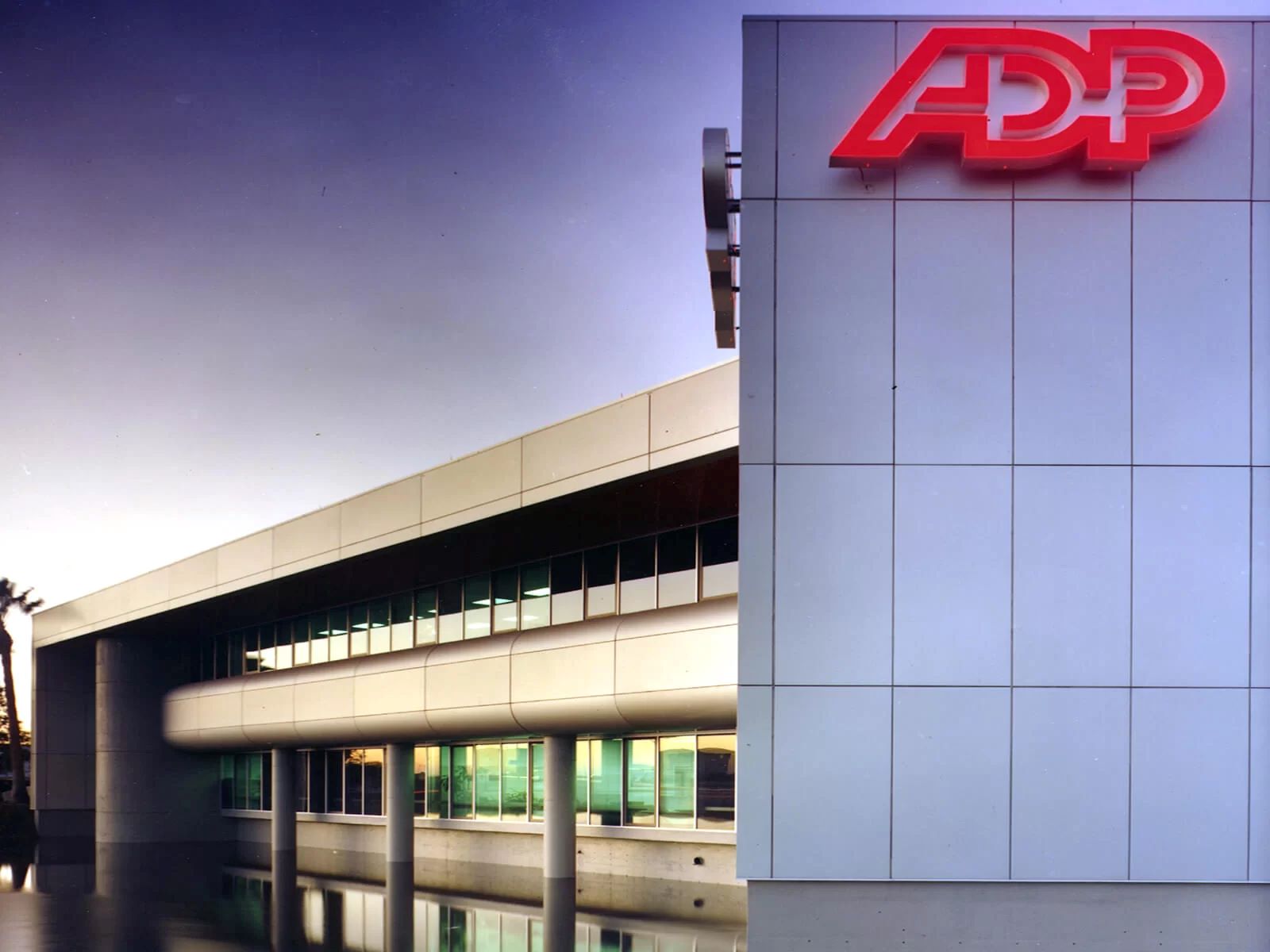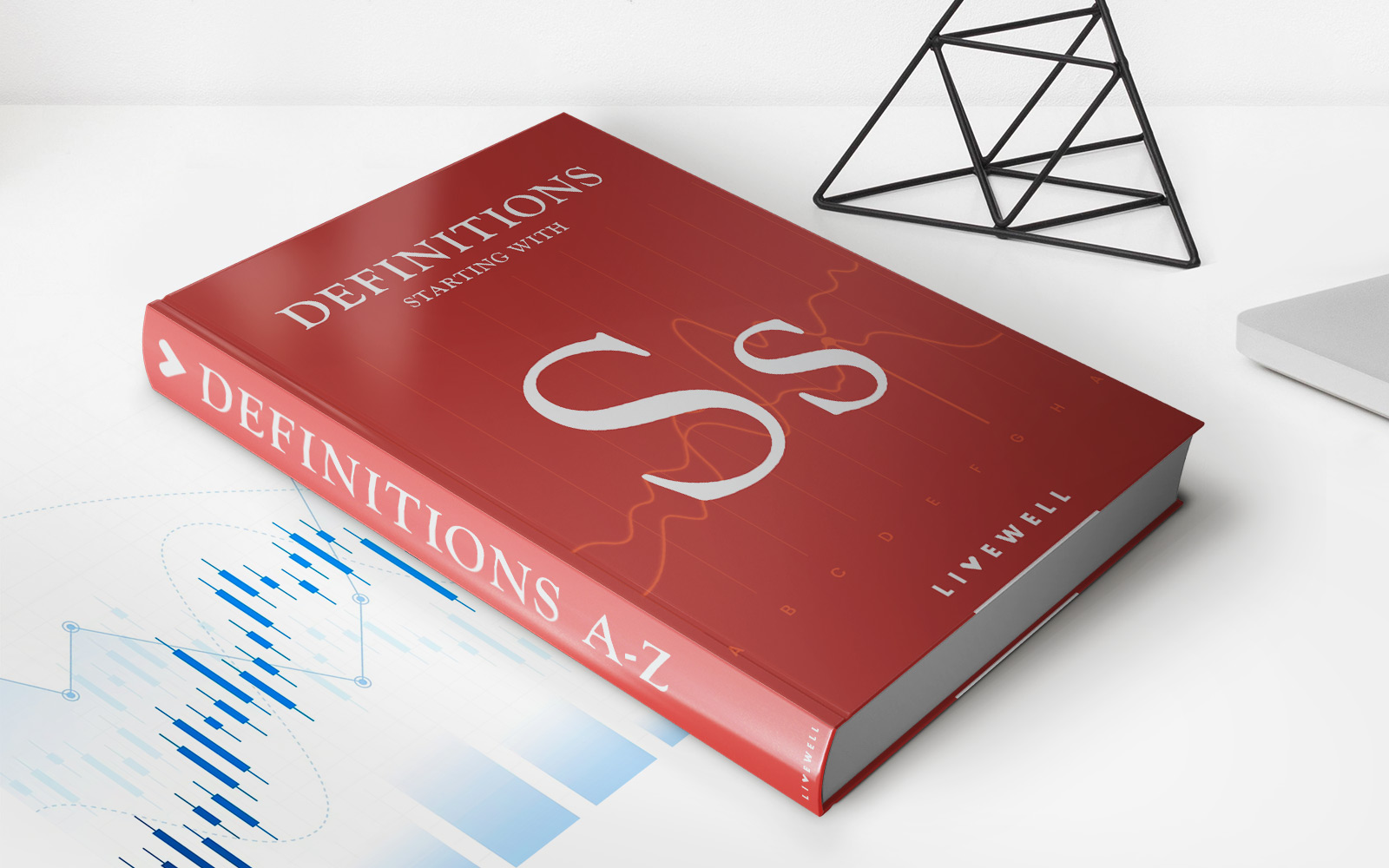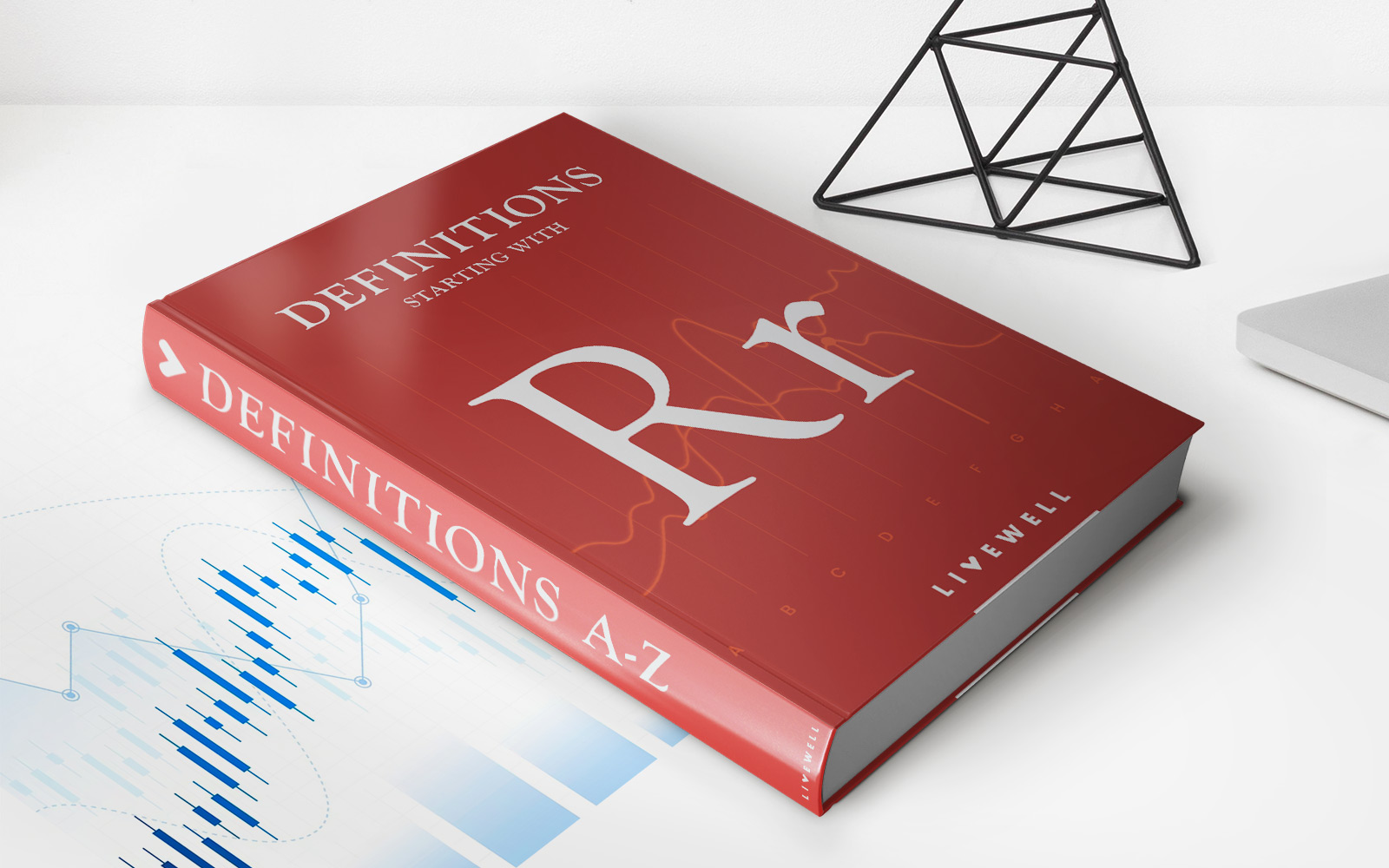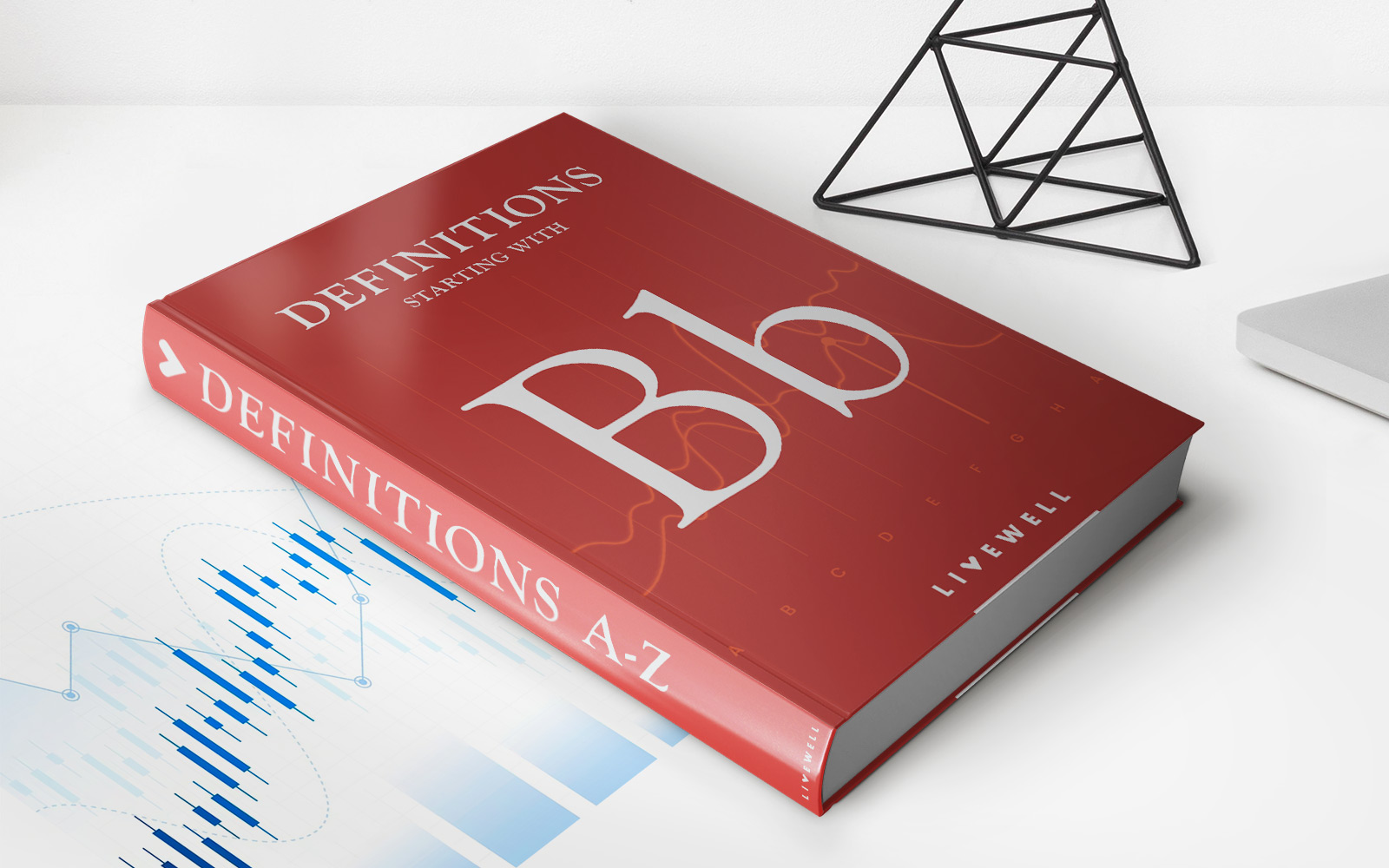Home>Finance>How Do I Get My Pension From A Previous Employer


Finance
How Do I Get My Pension From A Previous Employer
Published: November 27, 2023
Looking to access your pension from a previous employer? Get expert advice and tips on handling your finances and securing your retirement with our helpful guide.
(Many of the links in this article redirect to a specific reviewed product. Your purchase of these products through affiliate links helps to generate commission for LiveWell, at no extra cost. Learn more)
Table of Contents
Introduction
Reaching retirement age is a major milestone in life, and one of the key considerations at this stage is how to access the pension savings from your previous employer. This article will guide you through the process of getting your pension from a previous employer, equipping you with the information you need to navigate this important financial step.
Understanding the complexities of pension plans can be daunting, but it’s essential to familiarize yourself with the key aspects to ensure a smooth transition into your retirement years. Each pension plan is unique, and the options available to you will depend on the specific terms and conditions of your previous employer’s plan. By following the steps outlined in this article, you’ll be well-prepared to obtain your pension benefits.
The first step is to contact your previous employer to inquire about the process of accessing your pension. This will allow you to gather all the necessary information and understand any documentation or forms that will be required. Keep in mind that it may take some time to gather all the required paperwork, so it’s important to start this process well in advance of your desired retirement date.
Once you have gathered all the necessary information, you will need to provide the required documentation to your previous employer. This may include identification documents, proof of employment, and any other documentation they require to process your pension request. It’s crucial to ensure that you submit all the necessary paperwork accurately and within the designated timeframe, as any delays or errors could result in a delay in receiving your pension benefits.
After submitting the required documents, you will need to choose a distribution option for your pension. This decision will affect how your pension benefits are paid out to you, and it’s important to carefully consider the options available. Common distribution options include a lump sum payment, an annuity (a regular stream of payments), or a combination of both. The choice you make should align with your financial goals and provide you with a comfortable retirement income.
Once you have decided on a distribution option, you can proceed with the application process for your pension. This may involve filling out additional forms and providing more information about your financial situation. It’s crucial to review all the information you provide to ensure accuracy, as any inconsistencies or errors could lead to complications with your pension request.
As you navigate the process of obtaining your pension, it’s important to be mindful of the tax implications. Depending on your jurisdiction and the specific rules surrounding pensions, you may be required to pay taxes on your pension benefits. It’s advisable to consult with a tax professional to understand your tax obligations and optimize your retirement income.
Lastly, it’s essential to periodically review your pension options to ensure they align with your evolving financial needs. It’s not uncommon for pension plans to offer different investment and distribution options over time, and staying informed about these changes can help you make informed decisions about your retirement income.
Now that you have a general overview of the process for obtaining your pension from a previous employer, let’s dive into the details of each step and address some frequently asked questions (FAQs) that may arise along the way.
Understanding Your Pension
Before delving into the process of obtaining your pension from a previous employer, it’s crucial to have a solid understanding of your pension plan. Your pension is a retirement savings plan that your previous employer established on your behalf, and it serves as a valuable source of income during your retirement years.
First and foremost, familiarize yourself with the key features of your pension plan, including its type, contribution structure, and vesting schedule. Pension plans can vary significantly, so it’s important to review the documentation provided by your previous employer or contact their human resources department for clarification. Understanding these aspects will help you determine the available payout options when it comes time to access your pension.
One vital aspect of a pension plan is the vesting schedule. Vesting refers to the length of time you must be employed with your previous employer to become eligible for the full benefits of the pension plan. For example, a five-year vesting schedule means you would need to work for five years to be fully eligible. If you left your previous employer before becoming fully vested, you may still be entitled to a partial pension benefit based on the vesting schedule outlined in your pension plan.
It’s important to note that some pension plans have a defined benefit structure, while others may have a defined contribution structure. In a defined benefit plan, your pension benefit is based on a formula that typically takes into account factors such as your years of service and salary history. This type of plan provides a predictable, regular income stream during retirement. In contrast, a defined contribution plan, such as a 401(k) or 403(b), allows you to contribute a portion of your salary and potentially receive matching contributions from your employer. The accumulated funds in the defined contribution plan are invested, and your retirement income is dependent on the performance of these investments.
Understanding the specific details of your pension plan, such as the payout options available and any additional benefits or provisions, is crucial. Review the plan documents, including the Summary Plan Description or pension statements, to gain insight into how your pension benefits will be calculated and distributed. If you are uncertain about any aspect of your pension plan, seeking guidance from a financial advisor or pension specialist can provide you with the clarity you need to make informed decisions.
As you approach retirement, it’s important to evaluate your pension as part of your overall financial plan. Determine how much income you will require during your retirement years and assess whether your pension, along with any other retirement savings or investments, will be sufficient to meet your financial goals. If there is a shortfall, you may need to consider additional strategies, such as adjusting your retirement age or exploring supplemental income options.
Understanding your pension plan is an essential first step in the process of obtaining your pension from a previous employer. By familiarizing yourself with its structure, payout options, and benefits, you can approach the next steps with confidence and make informed decisions that will support your financial security in retirement.
Contacting Your Previous Employer
Once you have a solid understanding of your pension plan, the next step in obtaining your pension from a previous employer is to contact them directly. Getting in touch with your previous employer is crucial to gather the necessary information and initiate the process of accessing your pension benefits. Here are some key steps to consider when reaching out:
1. Locate the contact information: Start by locating the appropriate contact information for your previous employer’s human resources department or the department responsible for managing employee benefits. You can usually find this information on their website, in your employment records, or by reaching out to former colleagues who may still have connections to the company.
2. Prepare your inquiries: Before making contact, make a list of specific questions or concerns you have regarding your pension. This could include inquiries about payout options, vesting schedules, required documentation, or any other details you need clarification on.
3. Make the call or send an email: Reach out to your previous employer either by phone or email, depending on the contact information you have. Be polite and professional in your communication, clearly stating your purpose and the nature of your inquiry. If you are contacting them via email, make sure to include all relevant details and questions in a concise and clear manner.
4. Follow up if necessary: If you don’t receive a response within a reasonable timeframe, it’s advisable to follow up with your previous employer. Persistence in your communication may be required to ensure that your pension request is processed in a timely manner.
5. Document all correspondence: Throughout the process, keep a record of all your communications with your previous employer. This can include the dates and times of phone calls, the names of individuals you spoke with, and any important information or instructions provided. These records will serve as valuable references if any issues or disputes arise later on.
Remember that your previous employer has a legal obligation to provide you with the necessary information and assistance to access your pension benefits. If you face any challenges or encounter unresponsive behavior, you may consider seeking legal counsel or reaching out to your country’s pension regulatory authority for guidance.
By proactively contacting your previous employer and inquiring about the process of accessing your pension benefits, you will gather the important information you need to proceed with the next steps. This initial step sets the foundation for a smooth process and ensures that you are well-prepared to submit the required documentation and make informed decisions regarding your pension distribution options.
Providing Required Documentation
Once you have made contact with your previous employer and obtained the necessary information regarding your pension, the next step is to gather and provide the required documentation. Properly completing and submitting the necessary paperwork is crucial to ensure a smooth and timely processing of your pension request. Here are the key steps to follow:
1. Review the documentation checklist: Your previous employer will likely provide you with a checklist of the required documents needed to process your pension request. Review this checklist carefully to ensure you understand what is required. Common documents include proof of identification, such as a driver’s license or passport, proof of employment or service with the company, and any other specific forms or declarations required by the pension plan administrator.
2. Gather the necessary documents: Collect all the required documents listed in the checklist. Ensure that you have the original copies or certified copies as specified by your previous employer. Make copies of all the documents for your records; it’s always good to have a backup in case anything gets lost in the process.
3. Complete the forms accurately: For any forms provided by your previous employer, carefully read the instructions and fill them out accurately and completely. Pay attention to details such as your personal information, pension plan membership details, and beneficiary designations. Mistakes or incomplete information may lead to delays in processing your pension request.
4. Submit the documentation: Once you have gathered all the required documents and completed the necessary forms, it’s time to submit them to your previous employer. Some employers may prefer submission by mail, while others may have an online portal or specific email address for submitting the documents. Follow their instructions to ensure your documentation reaches the appropriate department in a timely manner.
5. Confirmation and follow-up: After submitting the required documentation, it’s a good idea to reach out to your previous employer to confirm receipt. This will provide you with peace of mind and allow you to address any potential issues promptly. Keep a record of the date, time, and person you spoke with during this confirmation call, and document any relevant information they provide.
It’s important to note that each pension plan and employer may have specific requirements and deadlines for submitting documents. Make sure to adhere to these guidelines to avoid any complications in processing your pension request. If you have any questions or uncertainties about the required documentation, do not hesitate to reach out to your previous employer’s human resources department for clarification.
By providing the required documentation accurately and in a timely manner, you are ensuring that your pension request moves forward smoothly. This step brings you closer to accessing your pension benefits and enjoying the financial security during your retirement years.
Choosing a Distribution Option
One of the key decisions you’ll need to make when obtaining your pension from a previous employer is choosing a distribution option. The distribution option determines how your pension benefits will be paid out to you during your retirement years. It’s important to carefully consider your options and select the one that aligns with your financial goals and provides you with the desired level of income. Here are some common distribution options to consider:
1. Lump Sum Payment: This option allows you to receive your entire pension benefit as a single, one-time payment. Choosing the lump sum payment provides you with immediate access to your pension savings, which may be beneficial if you have other financial goals or investment opportunities. However, it’s important to carefully consider the tax implications and potential risks associated with managing a large sum of money on your own.
2. Annuity: An annuity is a distribution option that provides you with a regular stream of income over a specific period or for the rest of your life. An annuity offers the advantage of predictable income, which can help you plan for your retirement expenses. There are different types of annuities, including fixed annuities, variable annuities, and indexed annuities. Each has its own features and potential benefits, so it’s important to research and consult with a financial advisor to determine the most suitable annuity for your needs.
3. Combination Option: Some pension plans offer the flexibility to choose a combination of both a lump sum payment and an annuity. This allows you to receive a portion of your pension benefit as a lump sum, which can be used for immediate financial needs or investment opportunities, while providing the remaining balance as an annuity for long-term income stability. This option provides a balance between immediate access to funds and consistent income in retirement.
4. Additional Pension Benefits: In some cases, your previous employer’s pension plan may offer additional benefits beyond the standard options mentioned above. These additional benefits could include cost-of-living adjustments (COLAs) that increase your pension payments over time to account for inflation, survivor benefits that provide income to your spouse or dependents after your passing, or specific provisions for disability or health-related expenses. Review the terms of your pension plan to determine if any of these additional benefits apply to you.
When choosing a distribution option, it’s important to consider factors such as your financial situation, retirement goals, health, and expected longevity. Take the time to analyze your personal circumstances and assess the pros and cons of each option. It may be beneficial to consult with a financial advisor who specializes in retirement planning to help you make an informed decision.
Remember that once you have chosen a distribution option and started receiving your pension benefits, it may be difficult to make changes. Therefore, carefully evaluate your options and select the one that best fits your long-term financial needs and retirement objectives.
Choosing a distribution option is a critical step in obtaining your pension from a previous employer. By considering your financial goals, risk tolerance, and retirement plans, you can select the option that provides you with the financial security and peace of mind you deserve during your retirement years.
Applying for Your Pension
Once you have gathered the necessary information, reviewed your pension plan, and chosen a distribution option, the next step in obtaining your pension from a previous employer is to apply for it. Applying for your pension involves submitting the required paperwork and initiating the processing of your pension benefits. Here are the key steps to follow when applying:
1. Review the application process: Thoroughly read and understand the application process outlined by your previous employer or pension plan administrator. Take note of any specific instructions, deadlines, or additional documentation that may be required.
2. Complete the pension application: Obtain the pension application form from your previous employer and fill it out accurately, providing all the necessary information. This may include details such as your personal information, employment history, pension plan membership details, and retirement date.
3. Attach supporting documents: Gather all the supporting documents required as part of the pension application process. This can include proof of identification, proof of employment, birth certificates, marriage certificates (if applicable), and any other documentation specified by your previous employer or pension plan administrator. Ensure that you have both the original copies (if required) and copies for your records.
4. Double-check for accuracy: Before submitting your pension application, carefully review all the information you have provided. Check for any errors or missing information and make any necessary corrections. It’s important to ensure the accuracy of your application to avoid delays in the processing of your pension benefits.
5. Submit the application: Follow the instructions provided by your previous employer for submitting your pension application. This may involve mailing the application and supporting documents to the designated address, submitting them through an online portal, or delivering them in person. Be sure to adhere to any deadlines and keep a record of when and how you submitted your application.
6. Confirmation and follow-up: After submitting your pension application, you may want to reach out to your previous employer or pension plan administrator to confirm its receipt. This will provide you with peace of mind and enable you to address any potential issues or missing documents promptly. Keep a record of your communication and note down any relevant details provided during the confirmation process.
7. Track the progress: Once your pension application has been submitted, it’s essential to track the progress of its processing. Your previous employer or pension plan administrator should provide you with updates on the status of your application. If you do not receive any updates within a reasonable timeframe, don’t hesitate to reach out and inquire about the progress and expected timeline.
Applying for your pension requires careful attention to detail and adherence to the specified procedures. By following these steps and submitting a complete and accurate application, you’ll be on your way to receiving your pension benefits and enjoying the financial security in your retirement years.
Keep in mind that the processing time for pension applications can vary, so it’s important to be patient during this stage. If you have any concerns or questions during the application process, don’t hesitate to reach out to your previous employer’s human resources department or the pension plan administrator for assistance. They are there to help guide you through the process and ensure a smooth transition into your retirement.
Handling Tax Implications
When obtaining your pension from a previous employer, it’s important to be aware of the tax implications associated with your pension benefits. Depending on your jurisdiction and the specific rules governing pensions, you may be required to pay taxes on your pension income. Here are some considerations and steps to help you navigate the tax aspect of your pension:
1. Understand your tax obligations: Familiarize yourself with the tax laws and regulations in your jurisdiction regarding pension income. Taxes on pensions can differ based on factors such as your age, the type of pension plan, and the distribution option you choose. Review the tax guidelines provided by your local tax authority or consult with a tax professional to gain a clear understanding of your specific tax obligations.
2. Consult with a tax professional: Given the complexities of tax regulations, it’s advisable to consult with a tax professional who specializes in retirement income. They can provide personalized guidance based on your unique circumstances and help you navigate the tax implications. A tax professional can assist you in understanding the potential tax liabilities associated with your pension benefits and identify strategies to minimize your tax burden, such as taking advantage of applicable tax deductions or credits.
3. Consider tax-friendly locations: If you have the flexibility to choose where you reside during retirement, consider locations that offer favorable tax treatment for pension income. Some jurisdictions may have tax-friendly policies for retirees, including lower tax rates or special exemptions for pension income. Research and explore options that align with your retirement goals and can potentially reduce your tax obligations.
4. Plan for required minimum distributions (RMDs): Depending on your jurisdiction, you may be required to take minimum annual withdrawals from your pension once you reach a certain age (often referred to as required minimum distributions or RMDs). Failing to take these withdrawals could result in penalties. Understand the rules and deadlines for RMDs and ensure that you comply with the requirements to avoid incurring unnecessary penalties or tax liabilities.
5. Manage your tax withholdings: When you begin receiving your pension benefits, you may have the option to have taxes withheld directly from your payments or make estimated tax payments on a regular basis. Consider working with a tax professional to determine the appropriate tax withholding amount to avoid any surprises when tax season arrives. Adjust your tax withholdings as needed to ensure that you meet your tax obligations throughout the year.
6. Keep accurate records: Maintain thorough and organized records of your pension income and any related tax documents, such as Form 1099-R or equivalent tax statements. These records will be valuable when filing your tax returns and may serve as backup documentation in the event of an audit or other tax inquiries.
It’s important to note that tax laws and regulations can change over time. Stay informed about any updates or amendments to tax legislation that may impact your pension income. Stay proactive and periodically review your tax strategy as part of your overall financial planning.
Handling the tax implications of your pension is a crucial aspect of obtaining your pension from a previous employer. By understanding your tax obligations, consulting with a tax professional, and effectively managing your tax withholdings, you can ensure that you fulfill your tax responsibilities and optimize your retirement income.
Reviewing Your Pension Options
As you approach the stage of obtaining your pension from a previous employer, it’s essential to periodically review your pension options. Pension plans can evolve over time, and new investment and distribution options may become available. By reviewing your pension options, you can ensure that you are making informed decisions and maximizing your retirement income. Here are some key factors to consider when reviewing your pension options:
1. Stay informed about plan changes: Pension plans can undergo changes in investment options, payout structures, or additional benefits. Review any communications or updates from your previous employer regarding changes to the pension plan. This information can help you evaluate whether the new options align with your financial goals and if adjustments to your pension strategy are necessary.
2. Assess your retirement goals: Take some time to evaluate your retirement goals and expectations. Your financial needs and objectives may have changed since you initially started contributing to the pension plan. Determine whether your current pension options still align with your desired retirement lifestyle. Consider factors such as your anticipated retirement age, expected expenses, and plans for any additional income sources.
3. Seek professional advice: If you’re unsure about the best course of action, consider consulting with a financial advisor who specializes in retirement planning. They can review your pension plan, provide insights into the available options, and help you make informed decisions based on your financial situation and long-term objectives.
4. Analyze investment options: In some pension plans, you may have the ability to select investment options for your pension contributions. Review the available investment choices and assess their performance, risk levels, and fees. If you’re uncomfortable managing your investments, consider seeking professional investment advice to ensure that your pension funds are appropriately allocated for your retirement goals.
5. Consider the impact of inflation: Inflation can erode the purchasing power of your pension over time. Review how your pension benefits are adjusted for inflation, such as through cost-of-living adjustments (COLAs) or other mechanisms. Understanding the potential impact of inflation on your pension income can help you make more accurate projections for your retirement expenses.
6. Evaluate beneficiary designations: Review your beneficiary designations to ensure that they reflect your current wishes. Life events such as marriage, divorce, or the birth of children may necessitate updating your beneficiaries. Keeping your beneficiary designations up to date ensures that your loved ones are appropriately provided for in the event of your passing.
7. Consider transferring or consolidating pensions: If you have multiple pension plans from previous employers, consider the benefits of consolidating them into a single account or transferring them to your current employer’s retirement plan. Consolidation can make it easier to manage your pension assets and simplify the distribution process during retirement.
Regularly reviewing your pension options is crucial to ensure that you are making the most of your retirement savings. By staying informed, seeking professional advice, and assessing your goals and circumstances, you can make informed decisions that align with your long-term financial objectives.
Remember to also comply with any deadlines or requirements for reviewing and adjusting your pension options. By staying proactive and keeping a pulse on changes in your pension plan, you can optimize your retirement income and maintain financial security throughout your retirement years.
Frequently Asked Questions (FAQs)
1. Can I access my pension from a previous employer before reaching retirement age?
The ability to access your pension before reaching retirement age depends on the terms and conditions of your specific pension plan. Some pension plans may allow for early withdrawals or offer provisions for special circumstances such as financial hardship or disability. Review your pension plan documents or consult with your previous employer or pension plan administrator to understand the options available to you.
2. Can I roll over my pension from a previous employer into an IRA or my current employer’s retirement plan?
In many cases, you can roll over your pension from a previous employer into an individual retirement account (IRA) or your current employer’s retirement plan. This allows you to consolidate your retirement savings and potentially take advantage of investment options and benefits offered by the new plan. Consult with a financial advisor or tax professional to understand the rollover process and any tax implications associated with your specific situation.
3. What happens if my previous employer goes out of business before I can access my pension?
If your previous employer goes out of business, your pension may still be protected. In many countries, there are pension guarantee funds that provide a safety net for pension plans in the event of employer bankruptcy. These funds may step in to ensure the payment of pension benefits. However, the level of protection and coverage can vary, so it’s advisable to contact your country’s pension regulatory authority or seek legal advice to understand the specific protections that apply to your situation.
4. What should I do if there is a discrepancy or error in my pension statements?
If you notice any discrepancies or errors in your pension statements, it’s important to address them promptly. Contact your previous employer’s human resources department or the pension plan administrator to report the issue and provide any supporting documentation or evidence. They will investigate the matter and work towards resolving the discrepancy. Keeping thorough records of your pension statements and communications will help you in providing the necessary information for resolving any issues.
5. What happens to my pension if I pass away?
If you pass away, the treatment of your pension benefits depends on various factors such as your pension plan’s terms, your beneficiary designations, and local laws. In many cases, pension plans offer survivor benefits that provide income to your spouse or dependents after your passing. Ensure that you have updated and accurate beneficiary designations to ensure that your loved ones are appropriately provided for in the event of your death.
Remember that these are general answers to frequently asked questions, and the specific circumstances surrounding each pension plan can vary. It’s important to refer to your pension plan documents, communicate with your previous employer or pension plan administrator, and seek professional advice when necessary to obtain accurate and personalized information regarding your pension.
Conclusion
Obtaining your pension from a previous employer is an important step in securing your financial future during retirement. By following the steps outlined in this guide, you can navigate the process with confidence and ensure that you receive your pension benefits in a timely manner. Understanding your pension plan, contacting your previous employer, providing the required documentation, choosing a distribution option, applying for your pension, handling tax implications, reviewing your pension options, and staying informed about frequently asked questions are all integral parts of the process.
It’s crucial to familiarize yourself with the details of your pension plan, including its vesting schedule, contribution structure, and available payout options. Contacting your previous employer allows you to gather necessary information and understand the specific requirements for obtaining your pension benefits. Providing accurate and complete documentation is vital to ensure that your pension request is processed smoothly. Choosing a distribution option that aligns with your financial goals and managing tax implications can help optimize your retirement income.
Don’t forget to periodically review your pension options, stay informed about plan changes, evaluate your retirement goals, and seek professional advice when needed. By staying proactive, you can make informed decisions to ensure that your pension plan remains aligned with your long-term financial objectives.
Remember, each pension plan and individual’s circumstances are unique. It’s important to refer to the specific terms and conditions of your pension plan, consult with professionals when necessary, and keep accurate records throughout the process.
By following the guidance presented in this article, you can navigate the process of obtaining your pension from a previous employer successfully. As you embark on this important journey, may your pension serve as a stable foundation for a fulfilling and financially secure retirement.














